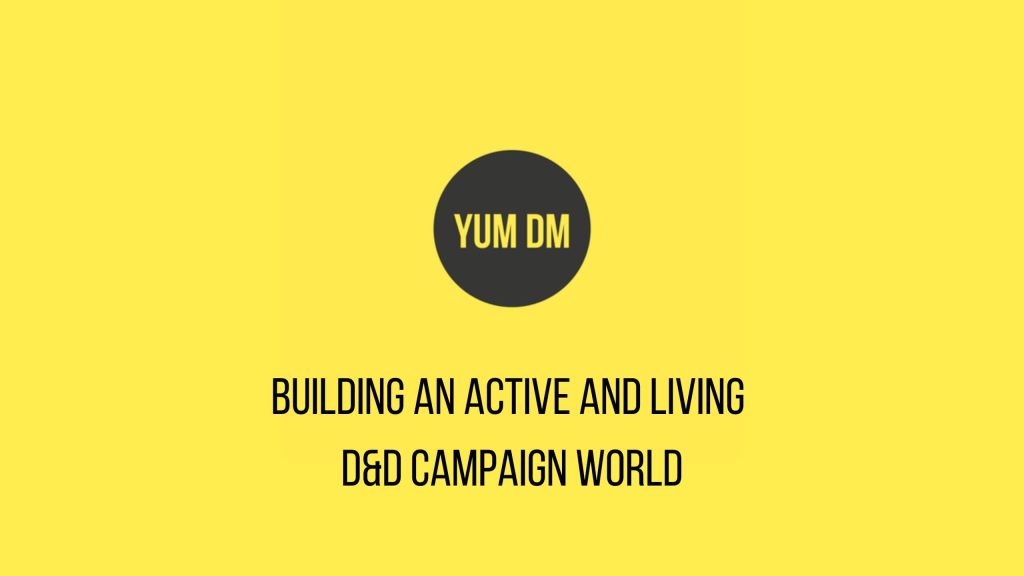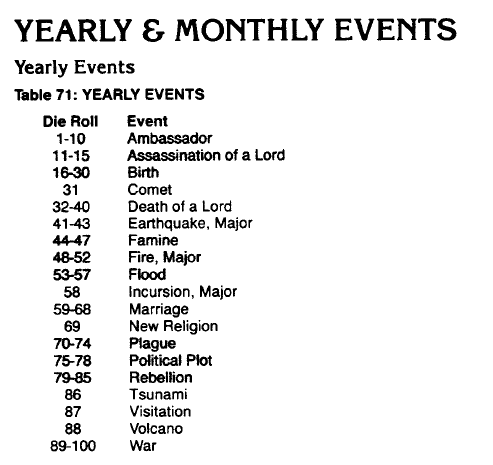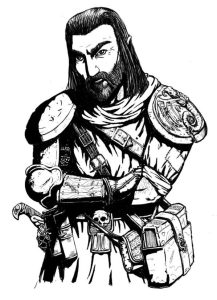
In regular Dungeons & Dragons adventures, PCs often find themselves on a linear journey, moving from one plot point to the next, with the world around them serving as a backdrop.
Antagonists are primarily focused on thwarting the PCs’ goals, their actions driven by the ever-looming influence of the Big Bad.
But what if I told you there’s a more immersive and dynamic way to play? To bring the world front and centre.
Welcome to the realm of active and living campaign worlds, where the environment responds to the players, and the consequences of their actions ripple through the entire narrative.
In this approach, the world becomes an active participant in the storytelling process, and the possibilities are as limitless as the players’ imagination.
So, how can you transform your D&D campaign world into an active and living campaign world? Here are some key principles to keep in mind.
World Reacts to PCs
In an active and living campaign world, the world takes the centre stage.
Rather than the PCs simply reacting to the world’s stimuli, it’s the world that responds to the players’ choices and actions. Every decision the PCs make, from exploring ancient tombs to negotiating with factions, has consequences.
When the PCs do something that is fairly significate in your campaign, after the game, think about how this impacts your world.
If the PCs destroy an orc encampment that was raiding an allied nation, what will the orcs do in retaliation?
The PCs manage to stop a corrupted head priest from poisoning the town’s water supply, but what happens to the church he was in charge of?
The PCs manage to negotiate a truce between rival goblin tribes, but could this affect a third faction in the area?
Persistence of Actions
When the PCs interact with their surroundings, those interactions should leave a lasting impact.
If they clear a goblin den, that den is no longer a threat, but it might create a power vacuum in the region. Or another, even deadlier, adversary may move in.
If they expose a corrupt noble, it sparks political turmoil, changing the social fabric of the campaign world.
For cleared dungeons (or parts thereof) or wilderness regions, I use a simple dice roll to determine if a location has been re-populated if revisited. The odds of this happening depends on how long it has been since it was last visited.
One week: 1 in 12
One Month: 1 in 10
Three Months: 1 in 8
6 Months or more: 1 in 6
These numbers are for wilderness locations. More populated locations may have a higher probability of being re-populated.

Dynamic Factions
Populate your campaign world with diverse factions, each with its own goals, motivations, and agendas.
As the PCs influence the world, factions react and adapt. An alliance with one faction may make them allies but turn others into enemies.
I have a whole issue of d12 Monthly based on guilds and factions which will make create and running them a whole lot easier.
You can keep track of a faction’s actions, and re-actions, in a spreadsheet or notebook and use that information if it impacts against what the PCs are doing.
Cascading Consequences
Small actions can lead to significant consequences.
If the PCs help a struggling village, they might foster an alliance with the locals. This might lead to resources, information, or even troops in times of need.
But if the PCs mistreat or neglect the same village, it could turn into a bitter enemy.
This may seem trivial at the time, but if the PCs want to explore a nearby dungeon or ruin they may find it difficult and expensive to get supplies from a settlement they mistreated.
Ongoing Events
Maintain a list of ongoing events and developments in your world.
These events can be both major, like a looming war, and minor, like a festival in a nearby town. As the PCs move through the world, these events continue to unfold, influencing their surroundings.
Regular events can be added to your calendar so they can come around at the same time each year of your campaign.
It’s good to have a table that you can roll on annually and/or monthly to indicate major events in the world.
These events could include visitation by another nation, birth of a royal heir, natural disasters, and so on.
The AD&D Oriental Adventures book has an excellent table that you can use and modify for just this purpose.

Player Agency
Encourage player agency by offering them choices that actually matter.
Avoid railroading and scripted outcomes. Instead, provide a multitude of possible outcomes based on their decisions.
This also means that GMing becomes easier, as you are simply reacting to what the PCs do rather than coming up with new situations all the time, or trying to keep on script with a more linear campaign.
One way to do this easily is at the end of each session ask the players what they want to do next. This will allow you to prepare that area, faction, NPCs, etc before the next session if you need to.

Story Arcs with Consequences
Craft story arcs with interconnected consequences.
Instead of isolated adventures, create a web of consequences and rewards. The treasure they discover may attract rivals, or an ally they save could come to their aid at a later date.
Add these into your random encounter tables. If the PCs have befriended a local druid or ranger, the next time they pass through this area, they may well meet up with them again.
Information Flow
NPCs, rumours, and written lore provide the players with a sense of the world’s ongoing narrative.
Give them tools to uncover information, make informed decisions, and anticipate consequences.
This is why I added a Research skill into my game: it allows the more intellectual characters to find information in old books and scrolls. And those with more street smarts can find out more local and immediate knowledge by making Gather Information checks (or the equivalent in your rules).
Final Thoughts
An active and living world creates a captivating and immersive experience for D&D players.
It’s a world where the choices of the PCs shape the narrative, where actions have lasting impacts, and where every corner of the world holds secrets, challenges, and potential allies or adversaries.
Embrace this dynamic style of gameplay, and watch your campaign world come to life in ways you never thought possible.
Over to You
Which of the above would you like to add the most into your campaign world? Let me know in the comments below.
While You’re Here…
Since 2021 I have been publishing d12 Monthly, a monthly zine, which has a ton of articles for any edition of Dungeons and Dragons.
Printed copies are available in my store. The PDF is available on DriveThruRPG and you can get both, plus support my work, via my Patreon.
I will also be releasing some more products in the near future.
Feel free to reach out to me on Twitter or my contact page any time.
